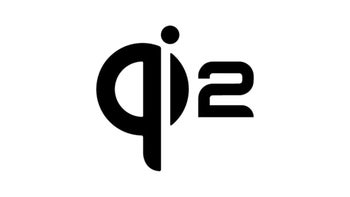New Qi2 wireless charging standard unveiled, based on Apple's MagSafe

Somebody check up hell has frozen, because iPhones are getting USB-C ports while Android is officially getting MagSafe... sort of!
Dubbed Qi2 and pronounced "chee two", the new standard is built around Apple's MagSafe wireless charging solution, which utilizes magnets to make sure the charging coils are. always aligned perfectly. Conversely, Qi2 scores the so-called Magnetic Power Profile, which basically utilizes the magic of magnets to make sure your phone never moves away a few millimeters to the side, thus interrupting the charging process. This would also cut down energy loss in our current world where energy efficiency is under the utmost scrutiny.
Though numbers aren't mentioned, Qi2 also promises faster wireless charging "for some devices", but also lays the groundworks for even faster Qi-certified wireless charging solutions in the future.
“Energy efficiency and sustainability are on everyone’s minds these days,” Paul Struhsaker also revealed. “Qi2’s perfect alignment improves energy efficiency by reducing the energy loss that can happen when the phone or the charger is not aligned. Just as important, Qi2 will greatly reduce the landfill waste associated with wired charger replacement due to plugs breaking and the stress placed on cords from daily connecting and disconnecting.”
Does Qi2 mean that you will be able to charge your future Android phone with a MagSafe charger, or vice versa? Given that you can currently charge an iPhone with any Qi-enabled wireless charger, and use your MagSafe charger to top up Android devices even though it wouldn't snap in place, we are mostly certain that there will be much greater interoperability and flexibility in the wireless charging space than before.
The first iteration of the Qi inductive wireless standard was introduced back in 2008, and after a brief scuffle with Power Matter Alliance's competing PMA standard, became the de facto go-to standard for wireless charging as it garnered better industry and consumer support, but probably the most important reason was Apple joining the WPC and backing up the Qi standard. The main differences with PMA were the wavelength that were utilized for the inductive charging (100-205kHz for Qi, 277-357kHz for PMA), otherwise the two solutions were pretty much similar in how they function.
This also potentially opens the possibilities for case and accessory makers to develop an interoperable range of magnetic accessories that will effortlessly latch to the back of the phones, similarly to the diverse MagSafe accessory ecosystem. Holder rings, small wallets and powerbanks, kickstands, and many other types of accessories might get to see the light of day with the advent of Qi2 on Android devices.










Things that are NOT allowed: